16 Different Types of Ficus Trees (with Pictures)
-

- Last updated:
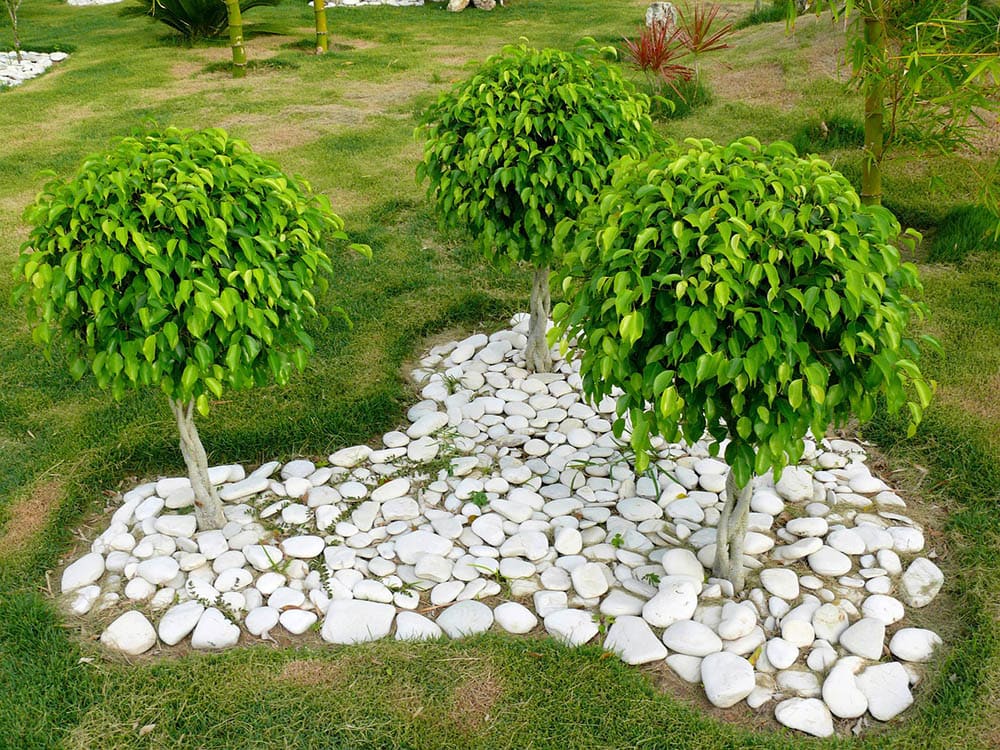
There are 850 known species of ficus trees around the world. Ficus trees are woody and tend to have evergreen leaves. Many people love them since they can work as ornamental house plants. However, don’t let any of these trees fool you. While some only grow to around 12 feet, other species of Ficus can grow more than 100 feet tall. To help you decide which species is ideal for your property, we’ll discuss some of the most popular Ficus trees native to different parts of the world.
As stated in the tables below, each Ficus tree does well in specific USDA zones. Keep reading and learn more about these hardy trees that thrive indoors and outdoors.
The 16 Different Types of Ficus Trees
1. Weeping Fig

| Hardiness Zones: | 10–11 |
| Outside Full Height: | Up to 100 feet |
| Inside Full Height: | 6 to 8 feet |
The Weeping Fig (Ficus benjamina) is known for its slender elegance. It’s among the Ficus species that you can grow inside and outside, depending on your preference. The Weeping Fig thrives in 10 to 11 hardiness zones. Indoors, you can grow it in a container to heights of 6 to 8 feet if you prune the tree frequently. Outside, the tree can reach 100 feet, with its roots spreading as far away as 30 feet.
It does well even in areas prone to drought and excessive heat. In fact, it tends to drop its leaves if overwatered or in areas with a high water table. Plant it in areas with well-drained soil and place the pot in indirect sunlight.
- Grows quite tall
- Elegant and slender branches
- Evergreen tree
- Heat tolerant
- Drought resistant
- Overwatering affects its growth rate
2. Ficus Ginseng

| Hardiness Zones: | 9 to 11 |
| Outside Full Height: | 40 inches |
| Inside Full Height: | 28 inches |
Next is Ficus Ginseng (Ficus microcarpa), which originates in the southern and eastern parts of Asia. Its most distinguishable characteristic is the chubby trunk that resembles a pot belly. The best areas to grow the Ficus Ginseng are those with a 9 to 11 hardiness zone. If you want to grow it in colder climates, keep it inside where it’s warm.
With the right conditions, this is an easy tree to grow, reaching heights of 28 inches indoors. Outside, it can grow 40 inches high. However, it’s more of an indoor plant, and it needs proper care and attention. It does better in a warm spot where it gets some indirect sunlight.
- Unique appearance
- Ideal height for indoor plant
- Evergreen leaves
- Fairs well without lots of water
- Can thrive even in hot climates
- Doesn’t grow quite tall
3. Long Leaf Ficus Tree
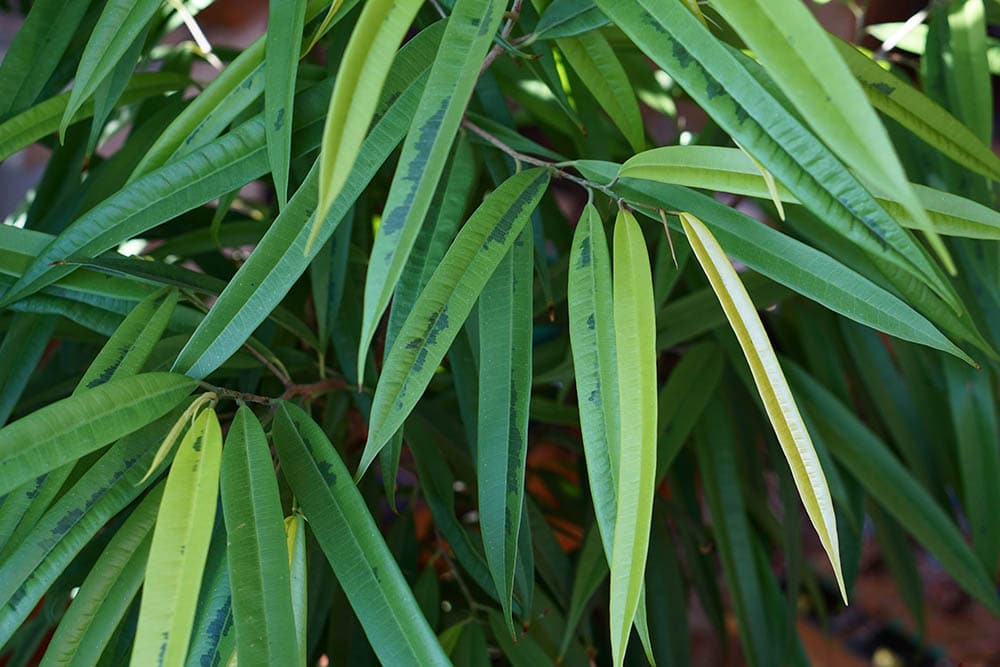
| Hardiness Zones: | 10 |
| Outside Full Height: | 100 feet |
| Inside Full Height: | 8 feet |
The Long Leaf Ficus (Ficus binnendijkii) tree is another example of an evergreen tree. It’s an ideal Ficus if you want tall and lush indoor plants, but it grows well outside. The Long Leaf thrives outside, preferably in the tropical climate, but it’s better to move it inside when winter comes around.
The Long Leaf Ficus can grow to be 100 feet tall outdoors and about 8 feet when grown indoors. Pruning helps keep the growth in check if you plant it in a container. In tropical or warm climates, the long leaves of the Ficus remain evergreen, providing lush and attractive foliage.
- Grows inside and outside
- Hardy Ficus tree
- Low maintenance plant
- All year lush green foliage
- Grows well in hot areas
- Direct sunlight burns leaves
4. Banana Leaf Ficus
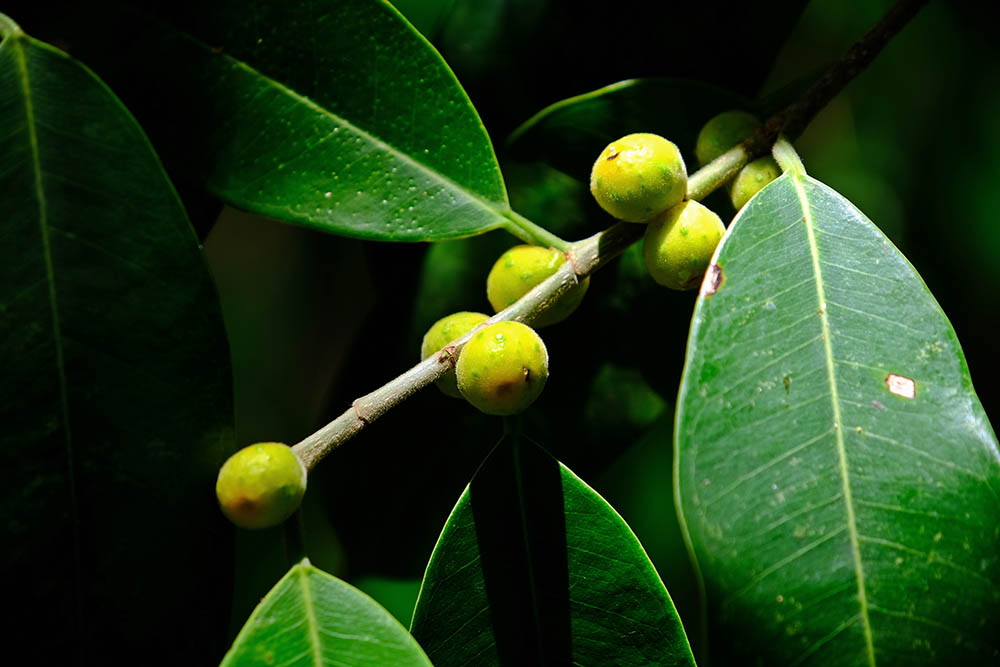
| Hardiness Zones: | 11 |
| Outside Full Height: | 12 feet |
| Inside Full Height: | 6 feet |
A much more adaptable tree is the Banana Leaf Ficus (Ficus maclellandii), which can thrive in changing conditions. It’s more of a shrub than a tree with long saber leaves. These leaves remain evergreen, and it does well in hardiness 11 zones.
It is more of a tropical plant that requires long hours in indirect sunlight when planted in a pot. It reaches 6 feet inside and can grow as tall as 12 feet when you plant it outside. Just ensure you pick well-drained soil that should remain slightly moist in both scenarios. Overwatering can result in leaf discoloration and leaf loss.
- Adaptable tree
- Ideal for indoor spaces
- Leaves are always green
- Thrives in pots or outside
- Overwatering results in root rot
5. Rubber Tree
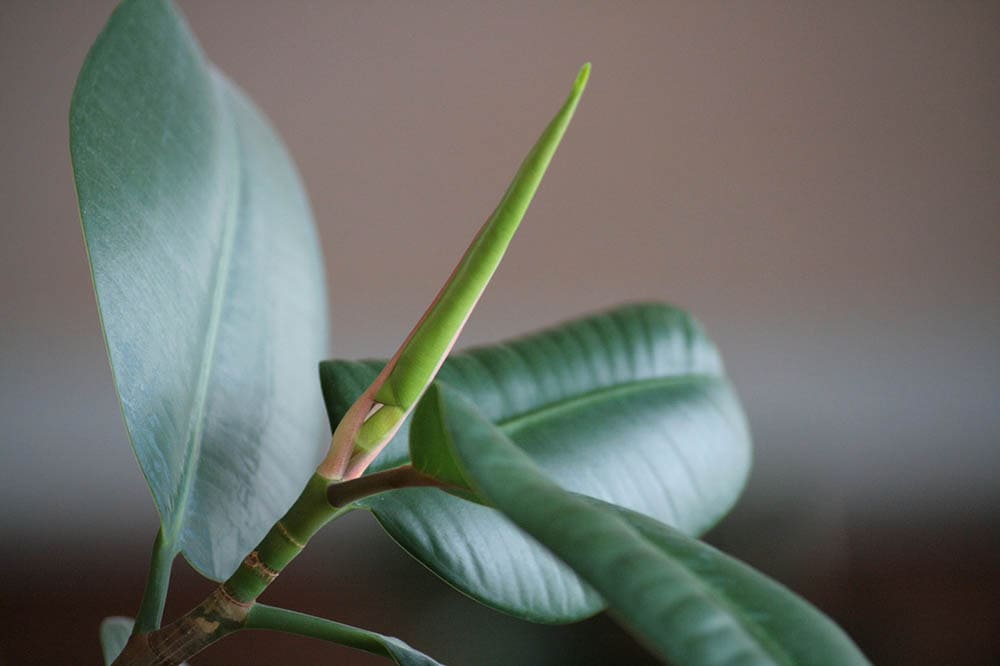
| Hardiness Zones: | 10 to 11 |
| Outside Full Height: | 30 feet |
| Inside Full Height: | 6 to 10 feet |
Low-maintenance trees are the best since they’re easily adaptable. The excellent news is this Rubber Plant (Ficus elastica) does well indoors or outdoors. It has shiny glossy leaves, making it an ideal indoor beauty. The Rubber Plant suits areas with a hardiness zone of 10 to 11, where it can reach heights of up to 30 feet.
When planted indoors, the tree can grow tall to reach 6 to 10 feet if it is given proper care. But that doesn’t mean you have to live with a 10-foot tree in your home. Regular pruning can slow down the growth, but eventually, it will grow tall and need more space.
- Beautiful for indoor spaces
- Grows quite tall
- Has lovely and glossy leaves
- Hardy Ficus tree
- Requires minimal watering
- Doesn’t do well in cold climates
6. Fiddle Leaf Fig
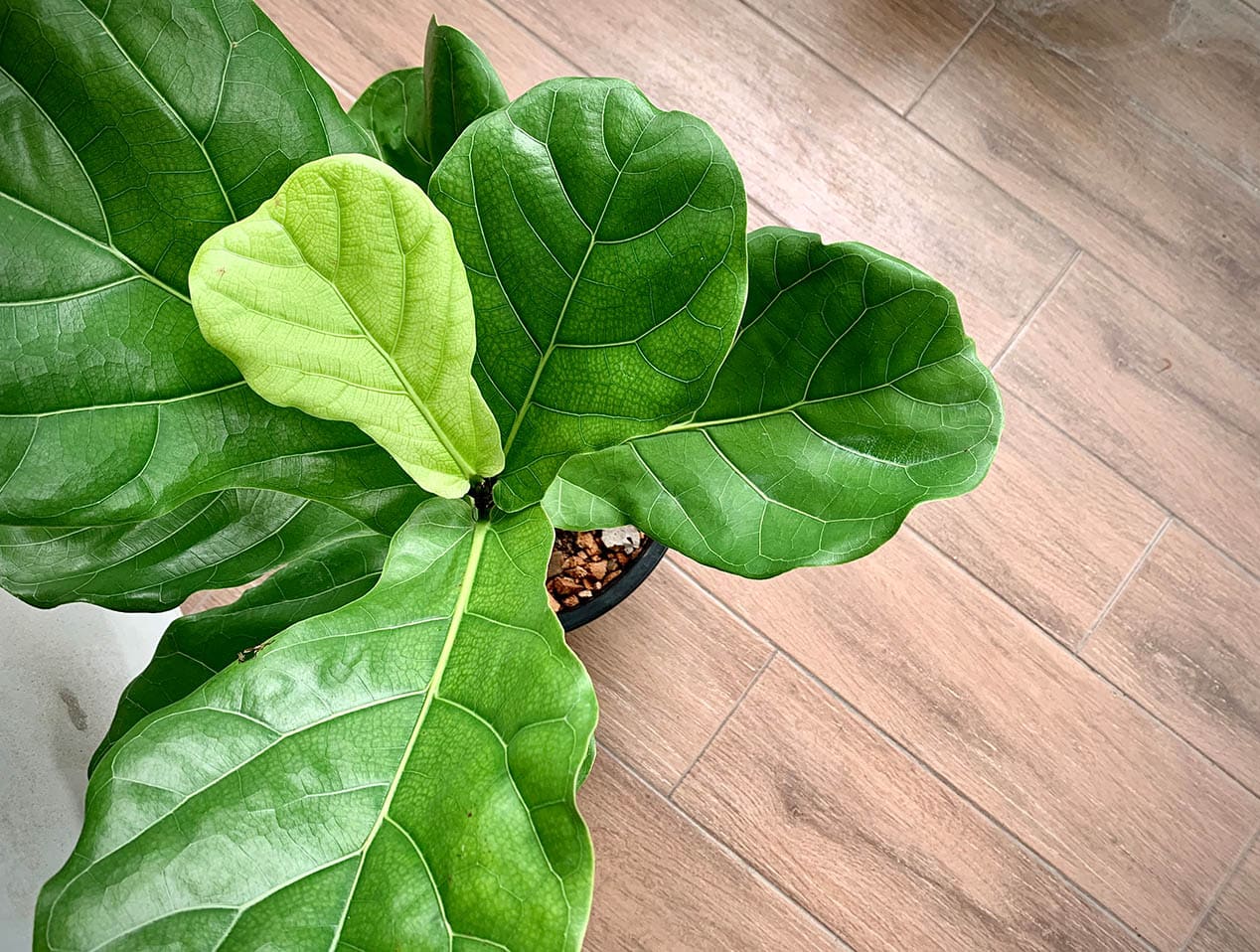
| Hardiness Zones: | 9 to 11 |
| Outside Full Height: | 30 to 49 feet |
| Inside Full Height: | 10 feet |
The Fiddle Leaf Fig (Ficus lyrata) is a Ficus plant originating in West Africa, specifically Sierra Leone and Cameroon. Its most unique feature is the variable-shaped leaves that are quite glossy. Some people love it as an indoor plant, but it also does well outside in USDA zones 9 to 11. A fully grown Fiddle Leaf Fig can reach 30 to 49 feet tall, but with continuous pruning, you can maintain its height at 10 feet.
This ornamental tree works well with most indoor setups requiring house plants. It’s best to place it in a warm spot in the house but avoid direct sunlight, which can cause leaf discoloration.
- Ornamental indoor plant
- Thrives outside in tropical conditions
- Provides ample shade
- Hardy Ficus tree
- Fast grower
- Toxic to cats and dogs
7. Sacred Fig
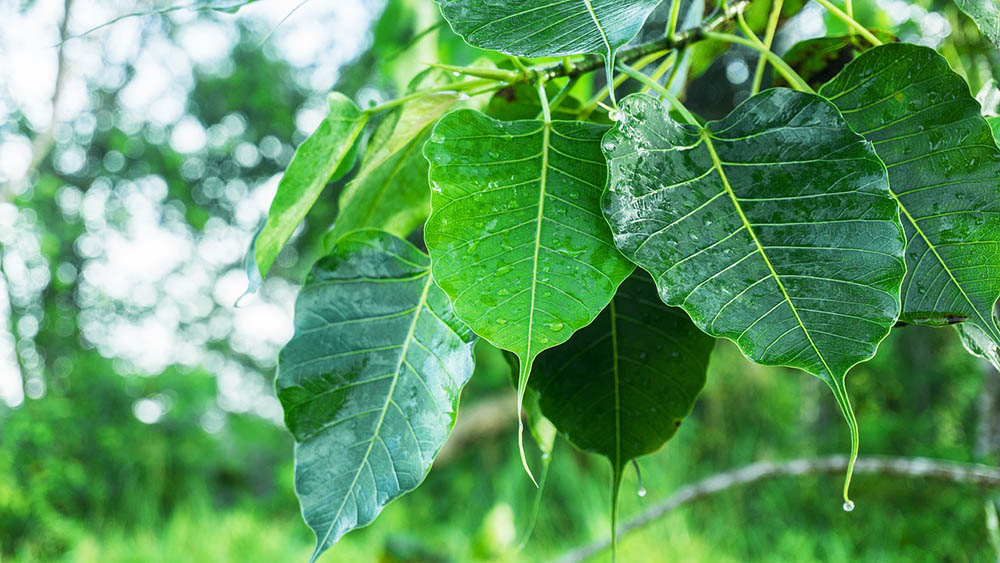
| Hardiness Zones: | 10 to 11 |
| Outside Full Height: | 98 feet |
| Inside Full Height: | 9 feet |
The Sacred Fig (Ficus religiosa) comes from the warm Indian subcontinent. True to its name, this Ficus tree holds religious significance for Jainism, Hinduism, and Buddhism. It’s not uncommon to find worshippers meditating under the canopy of this tree.
Outside, it can grow 98 feet tall, but placing it in a pot as an indoor plant ensures you have space for a 9-foot tree. It does well in USDA 10 to 11, meaning it’s heat-tolerant and drought-resistant.
The tree is semi-green; the old leaves fall off at a certain point, allowing new ones to grow. If you want to plant it outside, ensure it’s away from the house and other structures since roots can spread as far as 30 feet.
- Long living tree
- Provides ample shade
- Ideal for hot climates
- Drought resistant
- Ideal as an indoor and outdoor tree
- Low maintenance
- Fast growth rate
- Easily outgrows pots indoors
8. Clown Fig Tree
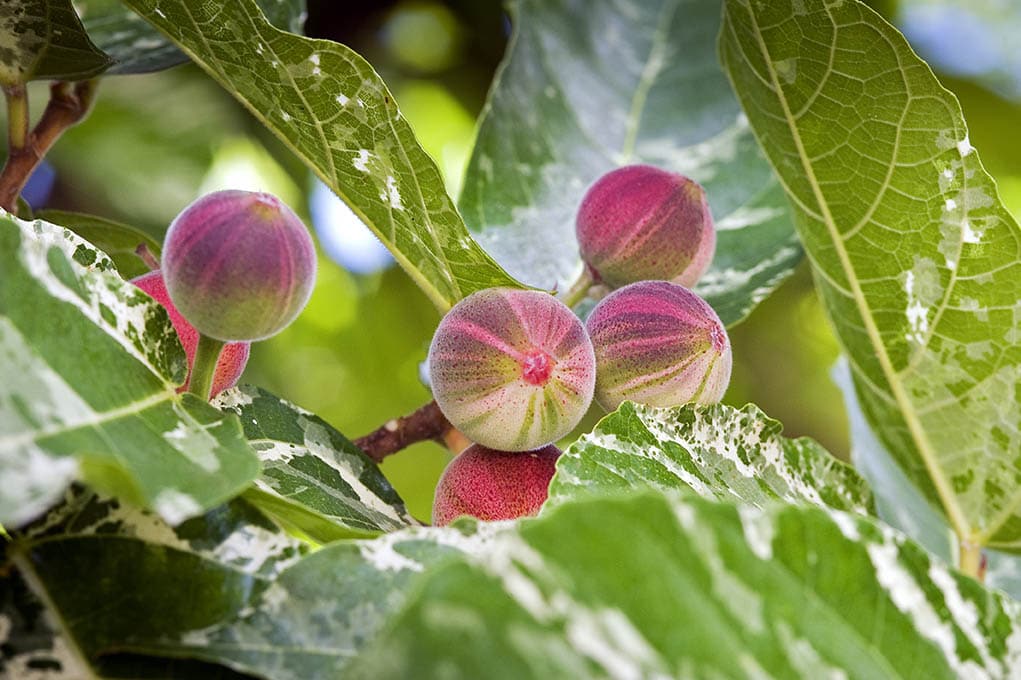
| Hardiness Zones: | 10a to 11 |
| Outside Full Height: | 20 feet |
| Inside Full Height: | 8 feet |
Among the rarest of Ficus trees is the Clown Fig (Ficus aspera parcelli), which has a fast growth rate. Its leaves are alluring, with multiple shades of green that make for a beautiful hedge. When bringing a Clown Fig tree home, remember they do well in 10a to 11 hardiness zones.
They won’t do well outside in colder climates but can work as indoor plants. Outside, the tree can grow to be about 20 feet tall, but inside, it grows to 8 feet. It’s best to place the Ficus tree in a deep pot in a warm area that receives indirect sunlight. Outside, pick a spot with partial shading or use a net to shade the young tree. Also, keep all the figs away from the family and pets. Clown Fig fruits aren’t edible.
- Hardy tree
- Easy to grow and maintain
- Requires minimal watering
- Good for hot climates
- Excellent for small yards
- Figs are toxic
9. Petiolate Fig
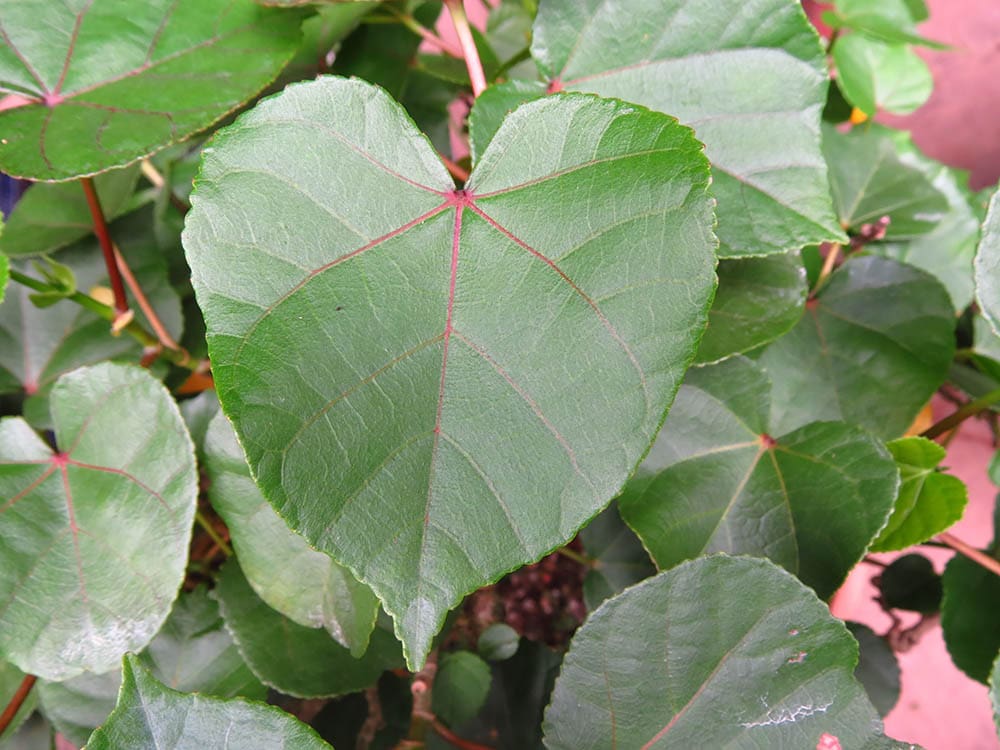
| Hardiness Zones: | 10a to 12b |
| Outside Full Height: | 30 feet |
| Inside Full Height: | 9 feet |
Otherwise known as the Rock Fig, Petiolate Fig (Ficus petiolaris) is a Ficus tree native to Mexico. This tree does well in areas with some moisture and partial shade. Outside, it can reach heights of up to 30 feet provided it’s placed with 10a to 12b hardiness zones.
As a houseplant, the tree can grow 9 feet tall, but it all depends on how you prune it. It’s best to keep the plant in warm parts of the house but away from direct sunlight, which can burn the leaves. The Petiolate Fig has heart-shaped leaves and a yellowish-green trunk. All the leaves and branches create a round crown at the top of the mature tree.
- Ideal indoor and outdoor plant
- Loves moist places
- Provides ample shade
- Can grow quite tall
- Minimal maintenance requirement
- Isn’t a drought-resistant Ficus
10. Sycamore Fig

| Hardiness Zones: | 4 to 9 |
| Outside Full Height: | 65 feet |
| Inside Full Height: | 10 feet |
For centuries, the Sycamore Fig (Ficus sycomorus) has been cultivated by many cultures, including the Ancient Egyptians. It is another example of a sacred Ficus tree revered by certain religions. The tree is native to Africa but also grows naturally in the Middle East. When planted outside, it can grow as tall as 65 feet but also is an ideal indoor tree.
Inside, the plant reaches about 10 feet with proper care. The Sycamore Fig is ideal for zones 4 to 9 that receive lots of rainfall and don’t dry out. However, even in these moist parts, it can only thrive in well-drained soil.
- Winter resistant
- Loves moist conditions
- Provides good shade
- Simple to plant and grow
- Works as an outdoor and indoor tree
- Not heat tolerant
11. Sandpaper Fig
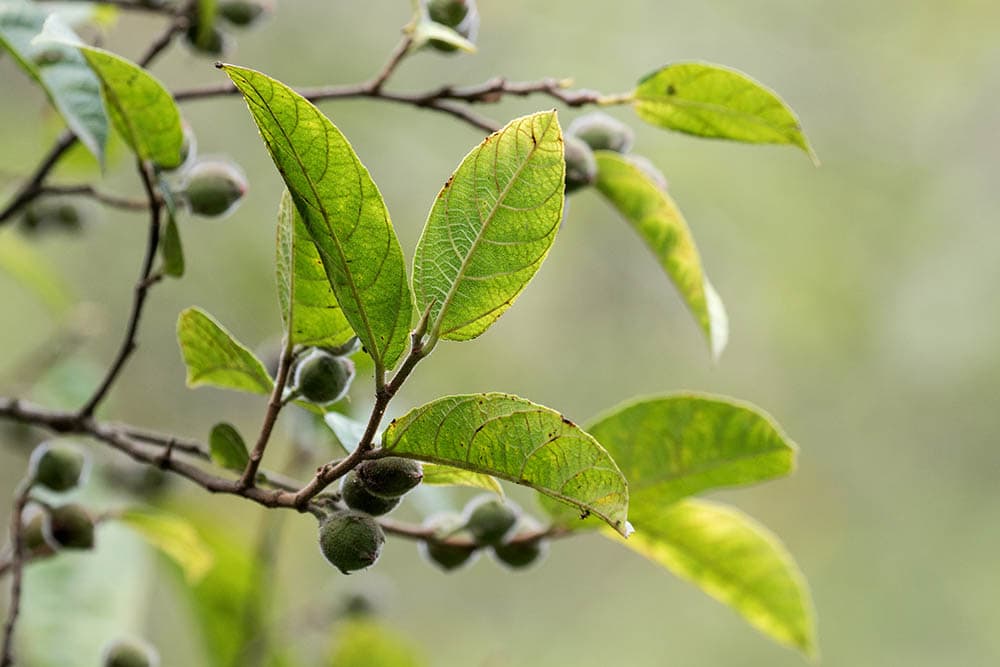
| Hardiness Zones: | 8 to 11 |
| Outside Full Height: | 20 to 39 feet |
| Inside Full Height: | 10 feet |
Some Ficus trees originate from all over the world. A good example is the Sandpaper Fig (Ficus coronata) which is native to Australia. It’s another of the group of Ficus trees that loves moist areas. In nature, the tree thrives along river banks and in rainforests. It can grow 20 to 39 feet tall under the right conditions.
However, you can also place it in a deep pot as a houseplant, where it can grow as tall as 10 feet. The tree has a dark brown trunk and ovate leaves that can be as wide as 6 inches. Its fruits are edible, and you can control the height inside your house with regular pruning.
- Sweet edible fruits
- Hardy tree
- Tolerant to cold climates
- Grows even in low light
- Good for shade
- Not a frost-tolerant tree
12. The Curtain Fig
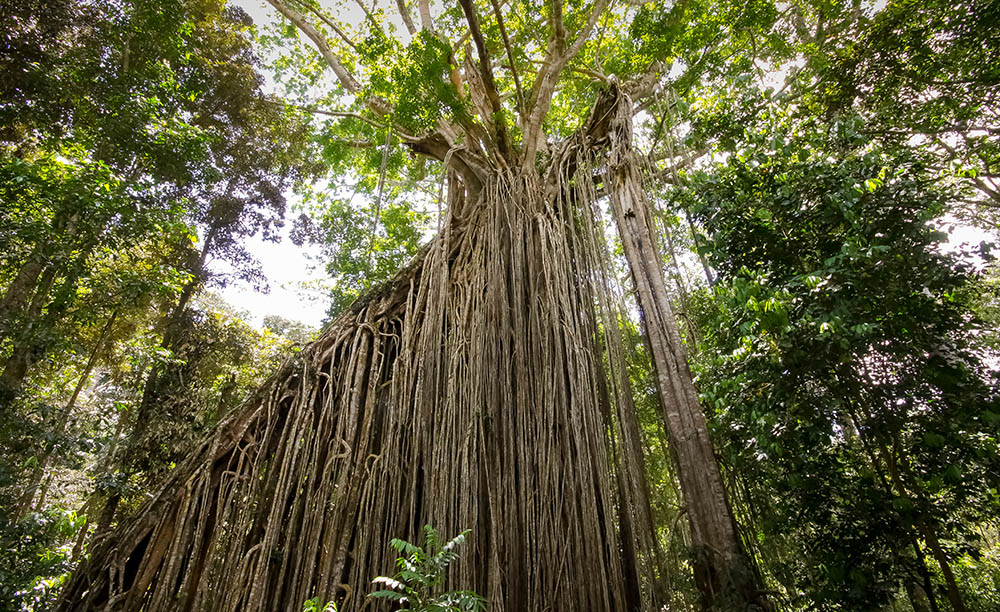
| Hardiness Zones: | 9 to 12 |
| Outside Full Height: | 160 feet |
| Inside Full Height: | 10 feet |
Evergreen trees make a yard or house look quite stylish. The Curtain Fig (Ficus microcarpa) is an excellent example of an evergreen tree. It’s native to China and also does well in Mediterranean climates.
The tree grows well outside in the right conditions to be more than 160 feet tall with a crown spread of over 200 feet. While it is a majestic tree, with rigorous pruning, you can keep it inside as a houseplant, where it can grow to more than 10 feet. Many people like it as an ornamental tree in larger homes. The best USDA zones for the Curtain Fig are 9 to 12 with partial shade.
- Hardy tree
- Grows quite tall
- Has a widespread crown
- Easy to grow
- Ideal for warm climates
- Doesn’t do well in direct sunlight
13. Ficus Audrey
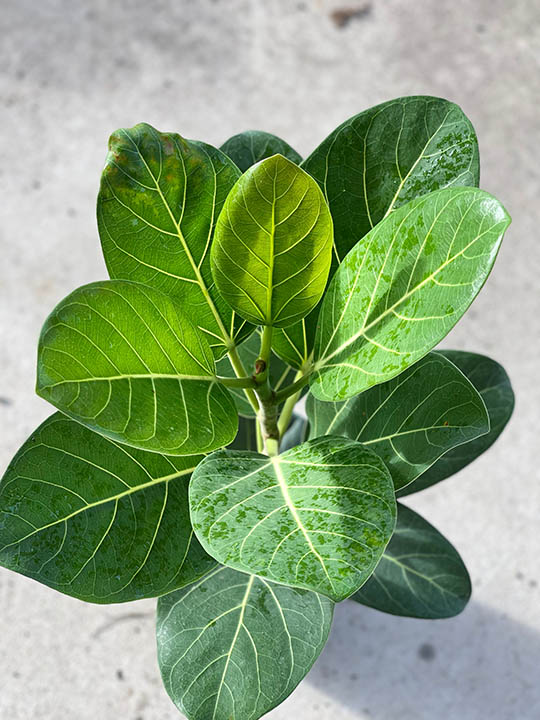
| Hardiness Zones: | 9 to 11 |
| Outside Full Height: | 98 feet |
| Inside Full Height: | 6.5 feet |
Ficus Audrey (Ficus benghalensis) has some of the most attractive foliage ever among Ficus trees. Its dark green leaves blend well with the brown trunk.
You can plant this tree inside as a houseplant or outside in a large space. A fully mature Ficus Audrey tree can grow 98 feet tall outside, provided it has the right conditions. When kept inside, the potted tree can be 6.5 feet tall and have about a 3-foot spread.
The best places to grow it outside are 9 to 11 hardiness zones since it is a hardy tree. Inside the house, pick a warm spot that receives lots of indirect sunlight. But you must take caution since the Ficus Audrey can be toxic to humans and pets.
- Lush green tree
- Ideal house plant
- Fast growth rate
- Not too fussy
- Tolerates dry conditions
- Toxic to humans and pets
14. Ficus Danielle
| Hardiness Zones: | 10 to 12 |
| Outside Full Height: | 40 to 50 feet |
| Inside Full Height: | 10 feet |
The Ficus Danielle (Ficus benjamina) resembles a lollipop. The glossy leaves of these trees stand upright and remain evergreen if the tree receives ample indirect sunlight when in a pot. The tree can remain relatively short inside with ample pruning and can reach a maximum height of 10 feet. But, outside, a fully mature Ficus Danielle can grow 40 to 50 feet tall.
It thrives in areas with well-drained soil and 10 to 12 hardiness zones. Still, with lots of TLC, the tree can grow fast and provide ample shade thanks to its crown that spreads to 25 or 30 feet. For indoor Ficus, allow the plant to dry out before watering since overwatering causes the leaves to turn yellow.
- Lovely lollipop appearance
- Easy to prune
- Glossy and attractive leaves
- Simple to maintain
- Excellent for shade
- Affected by bugs like red spider mites
15. Sea Fig
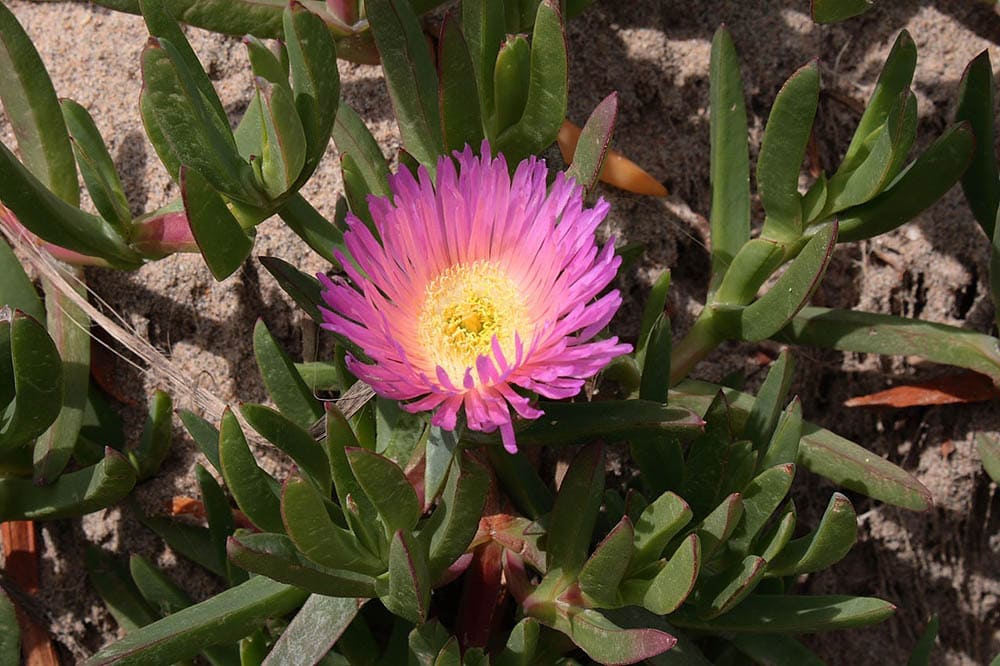
| Hardiness Zones: | 9 to 12 |
| Outside Full Height: | 114 feet |
| Inside Full Height: | 12 feet |
The Sea Fig (Ficus superba) is a hemiepiphyte strangler tree from the regions of Southeast Asia and Japan. Outside, it can grow to massive heights and tends to strangle all other species around it. A fully mature Ficus superba can grow to be more than 114 feet tall with a wide crown. It does well in numerous climates with 9 to 12 hardiness zones.
However, it’s considered an invasive species, so caution is necessary when planting it in your backyard. You can plant the Ficus trees in pots for better control, where the height can be limited to 12 feet. But ensure the tree gets lots of indirect sunlight and remains in a warm part of the house.
- Evergreen leaves
- Has a long lifespan
- Excellent for shade
- Ideal for large yards
- Easy to pot as a houseplant
- Invasive species
16. Opposite Leaf Fig
| Hardiness Zones: | 10 to 12 |
| Outside Full Height: | 20 feet |
| Inside Full Height: | 8 feet |
Lastly, there’s the Opposite Leaf Fig (Ficus hispida), which is relatively small compared to other giant Ficus trees. The tree is native to Australia and parts of Southeast Asia. Going by its name, this Ficus tree does have opposite leaves. I
It’s among the few dioecious tree species and has male and female flowers. It does well in warm areas with 10 to 12 zones but with moisture around. In a pot, ensure the soil dries out before you water it again. A fully mature tree reaches heights of 20 feet outside and 8 feet inside the house.
- Smaller variety
- Suits indoor spaces
- Unique leaves
- Overwatering turns the leaves yellow
Conclusion
Ficus trees are exceptional because you can plant some in your house and others outside. Each tree is unique and native to a different part of the world. They thrive in various hardiness zones and are not tolerant of harsh climates. For instance, while some Ficus trees love moist conditions, others thrive better in dry areas. Also, not all produce edible fruits, and it’s best to watch out for toxic ones like the Ficus Audrey. Overall, the types of Ficus trees in this list are excellent examples of the diversity of the species.
- https://ucanr.edu/blogs/blogcore/postdetail.cfm?postnum=16923
- https://citeseerx.ist.psu.edu/viewdoc/download?doi=10.1.1.1043.9385&rp=rep1&type=pdf
- https://www.researchgate.net/publication/313051180_Ficus_trees
- https://www.nparks.gov.sg/florafaunaweb/flora/2/9/2902
- https://edis.ifas.ufl.edu/publication/ST251
- https://apps.des.qld.gov.au/heritage-register/detail/?id=602734
- https://www.globe.gov/documents/18702582/66749041/St.+Francis+Primary+School,Malta.pdf/b999e059-42f6-428a-8cd2-59bf8366b841
- https://plantnet.rbgsyd.nsw.gov.au/cgi-bin/NSWfl.pl?page=nswfl&lvl=gn&name=Ficus
- http://indianculture.gov.in/images/fig-trees-ficus-spp-are-keystone-species
- https://www.anbg.gov.au/gnp/interns-2015/ficus-coronata.html
- https://hgic.clemson.edu/factsheet/weeping-ficus/
- https://edis.ifas.ufl.edu/publication/ST254
Featured Image Credit: PublicDomainPictures, Pixabay
Contents


